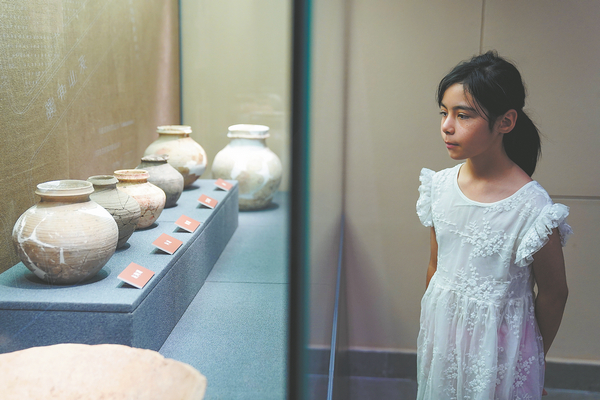

"What surprised us even more was the presence of the remains of one male and four female individuals, further confirming the chamber's use for family-style burial. The story behind this may be more complex than we imagine, but at present, we are unable to fully verify it," she says.
She adds that the tomb was probably built from top to bottom, starting with a huge pit in which the chamber was then built up gradually, raising the walls until they created a dome. After completion, the tomb would have been covered in soil, leaving only the tomb passage open to admit bodies.
"The bottom extends deep underground, making the structure more secure due to the pressure of the soil layers above. Coupled with a sturdy internal structure, this ensured the stability of the chamber and its long-term preservation," she adds.
The silk and metal products found suggest the backdrop of vibrant trade and a healthy economy. Funerary objects include glazed pottery jars, bronze mirrors, gold-gilt iron hairpins and iron knives, many of which were Central China Plains products of the time, or were made using techniques used in the region.
"They are evidence for studying the cultural exchanges," she says.
Ma adds that the burials illustrate the management of Xinjiang region by the central governments throughout history, as well as the political, economic and cultural relationships among the various cities and fortresses in this area.
According to the Xinjiang Institute of Cultural Relics and Archaeology, from 2007 to 2023, the site was excavated four times, leading to the discovery of more than 2,000 tombs, stoves, wells and other relics dating from the Spring and Autumn Period (770-476 BC) to the Ming (1368-1644) and Qing (1644-1911) dynasties, along with a large number of important artifacts.
This year, Xinjiang authorities drafted the Three-Year Action Plan for the Protection and Inheritance of Cultural Heritage in the Qiuci Area (2024-26), with the aim of further exploring the historical connotations and values of Qiuci archaeological objects and cultural remains.
Xinhua contributed to this story.
Contact the writers at chenmeiling@chinadaily.com.cn